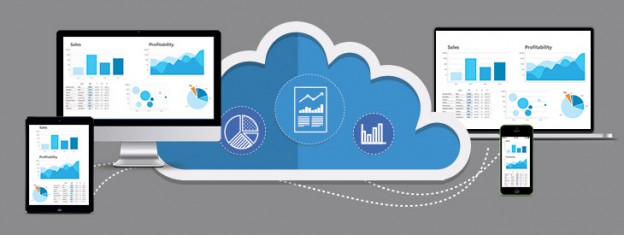The conventional IT model demands heavy capital investment to construct, maintain and manage the physical data center facility. Indubitably, this model demands significant overhead investment and well-trained professionals to keep the data center up and running.
How Cloud Move Is Drubbing the Established IT Model
The high upfront cost and hassle in maintaining a physical data center facility has pushed businesses to seek innovative ways that can save them money and give them faster time to market. Cloud has emerged as one of the easiest, advanced and convenient way to cut down overhead while facilitating businesses with numerous innovative opportunities.
Moving from in-house data center model to cloud-based model leverage businesses in following ways:
Software Licenses: Providing a license copy of required software to each of your employee is crucial for unprecedented business operations. However, the cost which a license copy involves may not fit into your set budget. At this point of time, cloud call can bring a sigh of relive for you and your business.
Unwarranted Hardware Failure: All the hardware equipment have a defined life-cycle. Any sudden component failure can quiver your ongoing projects and can cause serious aftermath. The risk of hardware failure can only be forestalled with adequate backup equipment.
IT Architecture Cost: Severs and associated hardware involves significant space cost even if the space allotted is not wholly utilized. Also, the businesses that own their spaces have to pay heavy taxes for the same. Do you know what else you can do with that space?
Read More at : Cloud ROI: An Influential Tool to Measure Bottom Line Performance
Staffing Cost: Running own data center demands well-trained professionals to manage and maintain the physical facility. Additionally, high labor cost is involved to monitor the data center against physical threats.
Reduced Energy Costs: Energy is one of the major investments that a data center owner makes to ensure business continuity. Few of the researches indicate that significant amount of capital can be saved on energy by switching to a cloud hosting based model.
Pay-per-use: Cloud offers high scalability. Capacity can be efficiently tailored to demand in no time. Unlike the traditional IT infrastructure, you don’t have to pay for not utilized resources.
Zero Downtime: Cloud is a cluster of servers, which mean any component failure will not take your business offline as the workload will get shifted to other servers in a cluster, immediately after the fault has been discovered.
The transition to cloud-based model offer greater degree of availability, increased ROI while slashing down costs on infrastructure and IT.






 Live Chat
Live Chat
